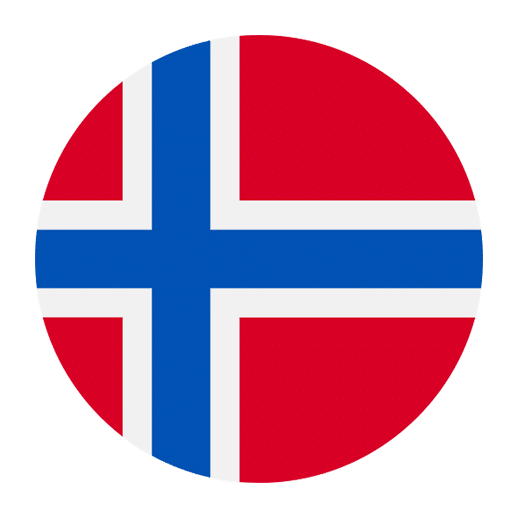Learning a new language can be an exciting journey, and one of the most rewarding aspects is the ability to express your own thoughts, opinions, and preferences. In Norwegian, like in any language, being able to articulate your personal views helps you engage more deeply in conversations and connect with others on a personal level. This article will guide you through the essential phrases, vocabulary, and grammatical structures you need to express opinions and preferences in Norwegian. Whether you’re a beginner or looking to refine your skills, this guide will provide you with useful tools to confidently share your perspectives.
Basic Phrases for Expressing Opinions
When it comes to expressing opinions in Norwegian, there are several key phrases that will serve as a foundation for your conversations. Here are some basic expressions you can use:
– **Jeg mener at…** (I think that…)
– **Jeg synes at…** (I think that…)
– **Jeg tror at…** (I believe that…)
– **Jeg føler at…** (I feel that…)
– **Etter min mening…** (In my opinion…)
These phrases are versatile and can be used in a variety of contexts. For example:
– **Jeg mener at dette er en god idé.** (I think that this is a good idea.)
– **Jeg synes at filmen var veldig bra.** (I think that the movie was very good.)
– **Jeg tror at vi kommer til å vinne.** (I believe that we are going to win.)
– **Jeg føler at noe er galt.** (I feel that something is wrong.)
– **Etter min mening er dette viktig.** (In my opinion, this is important.)
Expressing Preferences
In addition to sharing your opinions, you’ll also want to express your preferences. Here are some useful phrases:
– **Jeg liker…** (I like…)
– **Jeg elsker…** (I love…)
– **Jeg foretrekker…** (I prefer…)
– **Jeg hater…** (I hate…)
– **Jeg vil heller…** (I would rather…)
Examples:
– **Jeg liker å lese bøker.** (I like to read books.)
– **Jeg elsker norsk mat.** (I love Norwegian food.)
– **Jeg foretrekker kaffe over te.** (I prefer coffee over tea.)
– **Jeg hater å stå opp tidlig.** (I hate waking up early.)
– **Jeg vil heller se en film enn å gå på en fest.** (I would rather watch a movie than go to a party.)
Adding Nuance to Your Opinions
To make your expressions more nuanced and specific, you can use various adverbs and adjectives. This will help convey the strength or nature of your opinion. Here are some examples:
– **Virkelig** (really)
– **Absolutt** (absolutely)
– **Ganske** (quite)
– **Litt** (a little)
– **Helt** (completely)
Examples:
– **Jeg liker virkelig denne sangen.** (I really like this song.)
– **Jeg er absolutt enig med deg.** (I absolutely agree with you.)
– **Jeg synes filmen var ganske interessant.** (I think the movie was quite interesting.)
– **Jeg er litt usikker på det.** (I am a little unsure about that.)
– **Jeg er helt sikker på at du har rett.** (I am completely sure that you are right.)
Agreeing and Disagreeing
Being able to agree or disagree is crucial in any discussion. Here are some useful phrases for both agreeing and disagreeing:
Agreeing
– **Jeg er enig.** (I agree.)
– **Det er sant.** (That’s true.)
– **Du har rett.** (You are right.)
– **Akkurat.** (Exactly.)
Examples:
– **Jeg er enig med deg.** (I agree with you.)
– **Det er sant, det var en god idé.** (That’s true, it was a good idea.)
– **Du har rett, vi må gjøre noe.** (You are right, we need to do something.)
– **Akkurat, jeg tenkte det samme.** (Exactly, I thought the same.)
Disagreeing
– **Jeg er uenig.** (I disagree.)
– **Det er ikke sant.** (That’s not true.)
– **Jeg tror ikke det.** (I don’t think so.)
– **Jeg er ikke sikker på det.** (I’m not sure about that.)
Examples:
– **Jeg er uenig med deg.** (I disagree with you.)
– **Det er ikke sant, jeg synes det er en dårlig idé.** (That’s not true, I think it’s a bad idea.)
– **Jeg tror ikke det, vi burde prøve noe annet.** (I don’t think so, we should try something else.)
– **Jeg er ikke sikker på det, vi må undersøke videre.** (I’m not sure about that, we need to investigate further.)
Using Conjunctions to Connect Ideas
When expressing your opinions and preferences, it’s helpful to connect your thoughts and ideas using conjunctions. Here are some common conjunctions in Norwegian:
– **Og** (and)
– **Men** (but)
– **Fordi** (because)
– **Derfor** (therefore)
– **Selv om** (even though)
Examples:
– **Jeg liker pizza og pasta.** (I like pizza and pasta.)
– **Jeg liker å reise, men jeg har ikke tid.** (I like to travel, but I don’t have time.)
– **Jeg liker denne boka fordi den er spennende.** (I like this book because it is exciting.)
– **Jeg har mye å gjøre, derfor kan jeg ikke komme.** (I have a lot to do, therefore I can’t come.)
– **Jeg liker å svømme, selv om jeg ikke er så god på det.** (I like to swim, even though I’m not very good at it.)
Expressing Doubts and Certainty
Sometimes, you might want to express how certain or uncertain you are about your opinions or preferences. Here are some useful phrases:
Expressing Certainty
– **Jeg er sikker på at…** (I am sure that…)
– **Uten tvil…** (Without a doubt…)
– **Det er klart at…** (It is clear that…)
Examples:
– **Jeg er sikker på at vi vil like denne filmen.** (I am sure that we will like this movie.)
– **Uten tvil er dette den beste løsningen.** (Without a doubt, this is the best solution.)
– **Det er klart at vi må jobbe hardere.** (It is clear that we need to work harder.)
Expressing Doubts
– **Jeg er usikker på om…** (I am unsure if…)
– **Jeg tviler på at…** (I doubt that…)
– **Kanskje…** (Maybe…)
Examples:
– **Jeg er usikker på om vi kan klare det.** (I am unsure if we can manage it.)
– **Jeg tviler på at han kommer til å like det.** (I doubt that he is going to like it.)
– **Kanskje vi burde spørre noen om hjelp.** (Maybe we should ask someone for help.)
Giving Reasons and Explanations
To make your opinions and preferences more compelling, it’s important to give reasons and explanations. Here are some phrases to help you do that:
– **Fordi…** (Because…)
– **På grunn av…** (Due to…)
– **Grunnen til at…** (The reason why…)
Examples:
– **Jeg liker å lese fordi det er avslappende.** (I like to read because it is relaxing.)
– **Jeg foretrekker å jobbe hjemme på grunn av fleksibiliteten.** (I prefer to work from home due to the flexibility.)
– **Grunnen til at jeg valgte denne skolen er kvaliteten på undervisningen.** (The reason why I chose this school is the quality of the teaching.)
Seeking Opinions and Preferences
In conversations, it’s equally important to seek the opinions and preferences of others. Here are some phrases to help you ask for other people’s views:
– **Hva synes du om…?** (What do you think about…?)
– **Hva mener du om…?** (What do you think about…?)
– **Hva er din mening om…?** (What is your opinion on…?)
– **Hva foretrekker du…?** (What do you prefer…?)
Examples:
– **Hva synes du om denne filmen?** (What do you think about this movie?)
– **Hva mener du om å jobbe hjemmefra?** (What do you think about working from home?)
– **Hva er din mening om dette prosjektet?** (What is your opinion on this project?)
– **Hva foretrekker du, kaffe eller te?** (What do you prefer, coffee or tea?)
Practicing Conversations
To become more comfortable expressing your opinions and preferences in Norwegian, it’s important to practice. Here are some tips for practicing:
– **Engage in conversations with native speakers:** This will help you get used to the natural flow of the language and learn new expressions.
– **Use language exchange platforms:** These platforms allow you to connect with native speakers who are learning your language, so you can help each other.
– **Practice with a language partner:** Find a friend or a language partner who is also learning Norwegian, and practice together.
– **Record yourself:** Record yourself expressing your opinions and preferences, and listen to the recordings to identify areas for improvement.
– **Role-playing:** Create scenarios where you need to express your opinions and preferences, and practice with a partner.
Conclusion
Expressing opinions and preferences in Norwegian is an essential skill that will enhance your ability to communicate and connect with others. By using the phrases and tips provided in this article, you can confidently share your thoughts and engage in meaningful conversations. Remember to practice regularly and seek opportunities to use the language in real-life situations. With time and effort, you’ll become more fluent and comfortable expressing yourself in Norwegian. Happy learning!

